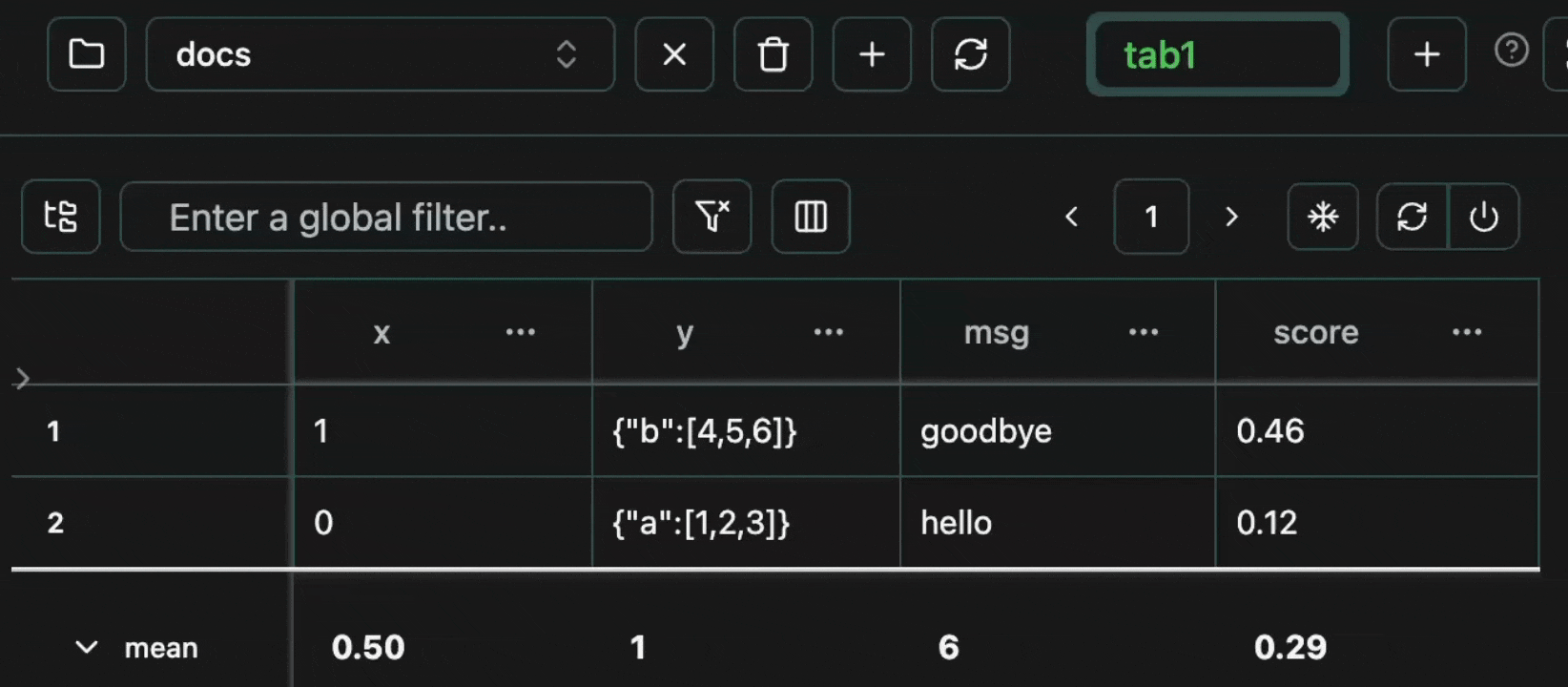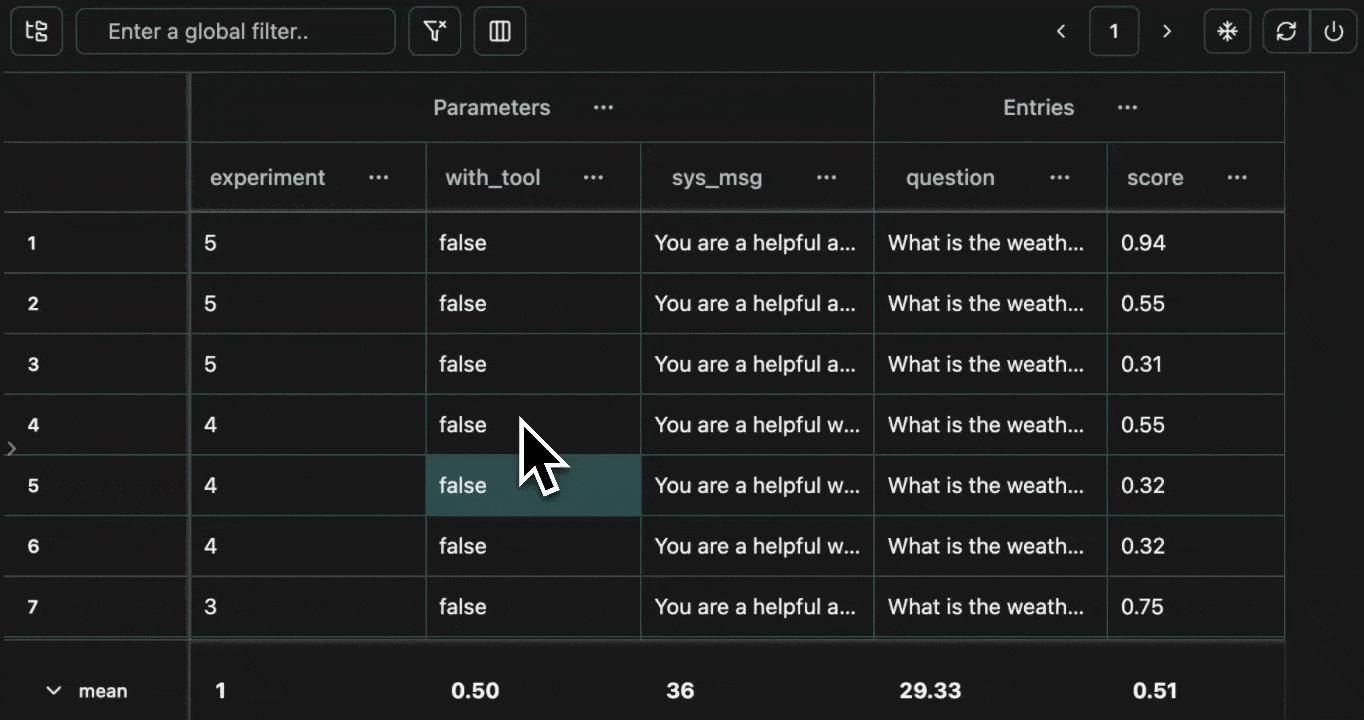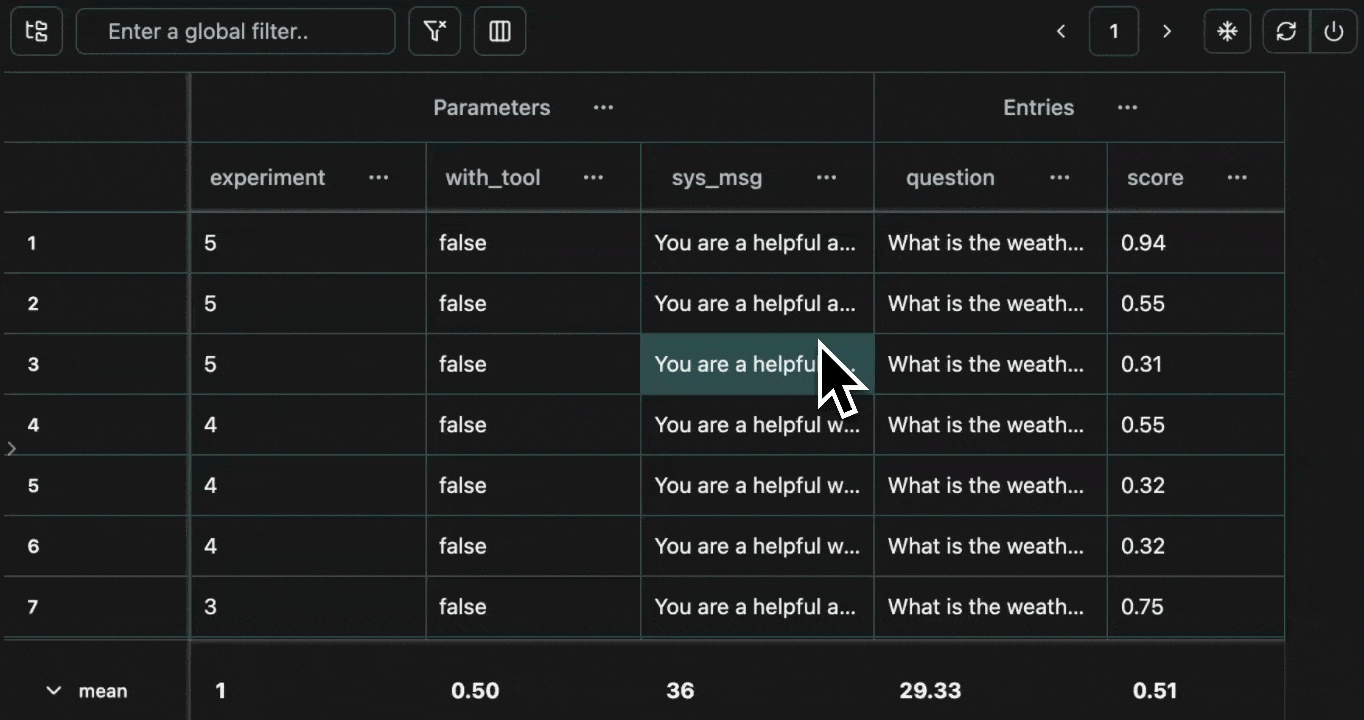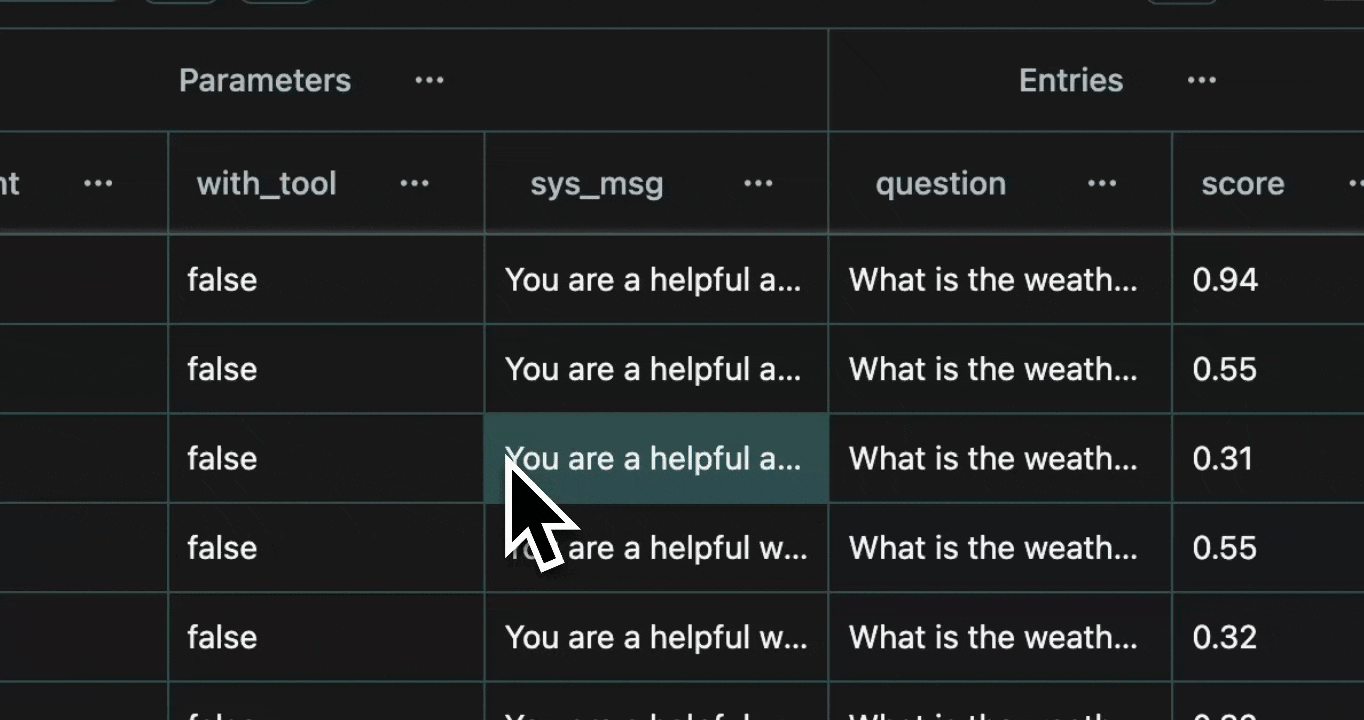Expand
Expand
 click image to maximize
click image to maximizeColumn Manipulation
Hiding Columns
Columns can easily be hidden by clicking the dropdown and pressing “hide column”. They can then be re-added by either:- hovering between columns and pressing the ”+” button
- clicking the column visibility dropdown and toggling the column
Expand
Expand
 click image to maximize
click image to maximizeMoving Columns
You can move columns by simply dragging them to where you want them.Expand
Expand
 click image to maximize
click image to maximizePinning Columns
You can pin columns to the left by dragging the left-most edge of the column towards the right (think Excel). This column will then be locked in place when you scroll left and right within the table.Expand
Expand
 click image to maximize
click image to maximizeGrouping
When it comes to data manipulation, grouping is probably the most useful and versatile feature. Consider the following set of (dummy) LLM evaluations: Open in your consoleExpand
Expand
 click image to maximize
click image to maximizeExpand
Expand
 click image to maximize
click image to maximizeExpand
Expand
 click image to maximize
click image to maximizeSorting
As you’d expect, sorting can also be applied to any column. Simply clicking “sort” will toggle the state between ascending, descending, and off. Rows are sorted in the order of the column sorts. For example, sorting by column A and then column B will prioritize sorting based on A, and only defer to B when the values in Column A are equal.Expand
Expand
 click image to maximize
click image to maximizeWith Grouping
When grouping is applied, the contents of each group are sorted as usual. However, the groups themselves can also be sorted based on the reduction metric that is set in the bottom left. This is the reduction metric that is shown in each cell during grouping. This makes it easy to quickly show the highest performing experiments at the top of the table (for example).Expand
Expand
 click image to maximize
click image to maximizeFiltering
So far, everything we’ve considered has been about viewing data. Filtering enables you to select a subset of the data that you want to view. Each column type has a different set of filter options. Let’s consider the following data for self-proclaimed “10x” engineers on the team: Open in your consoleBase
Firstly, all columns support filtering via the following:Exists: whether or not the field was actually included in the logIs None: if the field was included, but a value ofNonewas written
AND and OR operators.
We will also soon support parentheses for nested filter expressions.
Everything else is column specific.
Strings
Includes: whether or not the string includes the substringExcludes: whether or not the string excludes the substring
Expand
Expand
 click image to maximize
click image to maximizeNumbers
==,!=,>,>=,<,<=: standard comparison operators
Expand
Expand
 click image to maximize
click image to maximizeDateTime
>,<: standard comparison operatorsRelative Mode: select relative to the current timeAbsolute Mode: select an absolute point in time
Expand
Expand
 click image to maximize
click image to maximizeBooleans
True: is trueFalse: is false
Expand
Expand
 click image to maximize
click image to maximizeLists and Dicts
Includes: whether or not the list includes the item / dict includes the keyExcludes: whether or not the list excludes the item / dict excludes the key
Expand
Expand
 click image to maximize
click image to maximizeGroups [🚧]
Groups can also be directly filtered (selected). This is useful if you want to select a specific subset of experiments, for example. Given that it acts more like a selector than a filter, the group filtering is applied independently to the standard column-wise filtering. If you want to propagate the group selection(s) to the columns filters, you can simply press “propagate” in the group filter dropdown.Global
Filters at the column level apply the filter directly to that column, and each column filter is effectivrely stitched together with anAND operator.
However, you can write your own expressive filter expressions by the global filter,
using basic Python syntax, using the column names as variable names.
x * y > 0.
We couldn’t achieve this with column filters, but we can with the global filter,
using an expression such as x * y > 0 or ( x > 0 and y > 0) or (x < 0 and y < 0).
Expand
Expand
 click image to maximize
click image to maximizeExpand
Expand
 click image to maximize
click image to maximizeDerived Columns
Derived columns make it possible to create new columns based on existing ones. Again, all general Python syntax is supported. For example, we could derive a new column that compute the length of the vector[x, y].
Open in your console
(x**2 + y**2)**0.5:
Expand
Expand
 click image to maximize
click image to maximizeExpand
Expand
 click image to maximize
click image to maximize